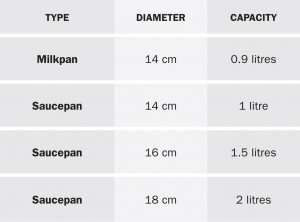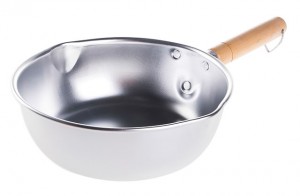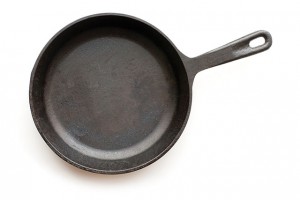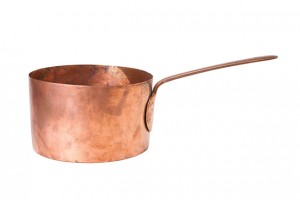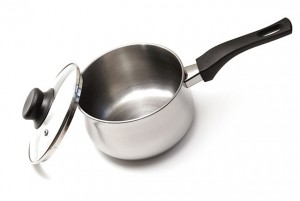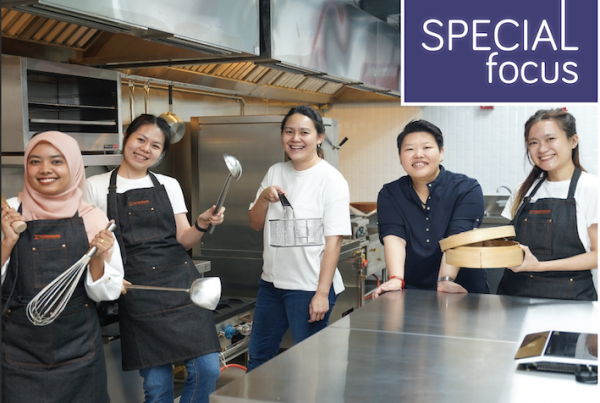KITCHEN EFFICIENCY COMES TOGETHER WITH THE RIGHT TOOLS FOR EACH SPECIFIC TASK.
BRINGING LIQUIDS TO A BOIL
It does exactly what its name says; a saucepan is used for cooking gravies, sauces or a smaller portion of liquid for a kitchen might not cook a 20 liter pot of soup on a daily basis. It is also useful for boiling vegetables, cooking rice, noodles and a variety of items. For more flexibility, it is recommended to equip the kitchen with a set of saucepans so that you do not waste gas heating up a large saucepan for something small or face a lack in capacity and spend extra time repeating the cooking process. Utilise high-sided sauce pans for foods with high liquid content while low-sided or flare-sided saucepans are helpful for reduction of liquids. Pans are generally measured across their tops so if you see ‘14cm’, it refers to the diameter. Some might categorise according to capacity and the diameter to capacity ratio is as such:
There are also various materials used to make a saucepan including:
ALUMINUM
Its hard anodised material is scratch-resistant, does not chip, crack or peel but cannot be used on induction stoves. Coated aluminum means an enamel coating on the outside and a nonstick coat on the inside. While the exterior will be harder to clean, its interior is strong enough to withstand scratches and stains as well as protect food from the transference of metal.
CAST IRON
Thick and heavy material makes for better heat retention and distribution although it takes some time to heat up. Some users might prefer this for slow and steady cooking. Its enamel exterior and nonstick interior gives it flexibility across all hob types although its weight might be a threat on ceramic surface hobs so lift the pan and not drag it.
COPPER
One of the best heat conductors, it distributes heat evenly. Its only downside is pricing and the need of a special cleaner to maintain it.
STAINLESS STEEL
Stainless steel is not a material on its own but it’s a combination of iron and other metals that conduct heat well so that even cooking is achieved and hot spots on the pan are eliminated. Its hard surface is a breeze to clean, does not chip, break or flake therefore continues to look good after years of wear and comes with or without nonstick coating.

